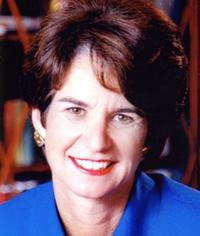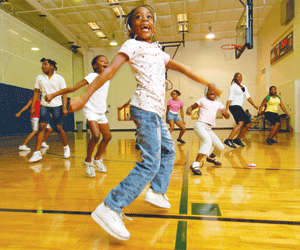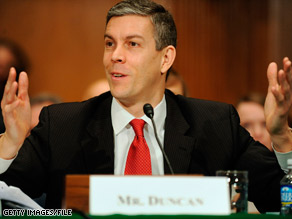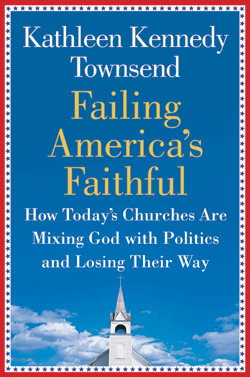Elementary education thrives in the middle of an Orlando YMCA
 I was in Orlando a few weeks ago, but not at Disney World or the Epcot Center. My youngest is 19, so it’s been a while since I stayed at the African lodge and watched the giraffes come up to our window. Even further back is my memory of “It’s a Small World After All” at the New York’s World’s Fair in 1964, a place I visited quite often as a 12-year-old when my father was running for the Senate. Fast forward almost half a century and my second daughter is pregnant, so I hope I’ll be back to Disney World again before too long.
I was in Orlando a few weeks ago, but not at Disney World or the Epcot Center. My youngest is 19, so it’s been a while since I stayed at the African lodge and watched the giraffes come up to our window. Even further back is my memory of “It’s a Small World After All” at the New York’s World’s Fair in 1964, a place I visited quite often as a 12-year-old when my father was running for the Senate. Fast forward almost half a century and my second daughter is pregnant, so I hope I’ll be back to Disney World again before too long.
Actually my destination a few weeks ago was just as exciting as the Big Mountain Thunder Railroad or Buzz Lightyear’s Space Ranger Spin. It was a school of the future, already up and running: the Lake Nona YMCA/NorthLake Park Community-School Partnership.
 NorthLake Park public elementary school is located in the same building as the local YMCA. Wow! The 30,000-square-foot Y is literally right in the middle of the school. The children, who would never have had access to a swimming pool at any regular public school, can now learn to swim, and they also get in shape in the gym and on the walking trails. Some of them take yoga before a test to reduce their pre-test butterflies.
NorthLake Park public elementary school is located in the same building as the local YMCA. Wow! The 30,000-square-foot Y is literally right in the middle of the school. The children, who would never have had access to a swimming pool at any regular public school, can now learn to swim, and they also get in shape in the gym and on the walking trails. Some of them take yoga before a test to reduce their pre-test butterflies.
Teachers, too, can easily get to the gym’s StairMasters, weights, and workout classes. The results aren’t just better abs but better attitudes. The teachers are happy, and their higher retention rate pays dividends for the kids.
The parents are also more involved. Instead of an awkward once-a-year meeting, teachers and parents find themselves on adjacent bikes in the spin class. They’re comfortable with one another.
I was stunned to learn that the school was more than a decade old, because it looked so new and fresh. A few years ago, when the school system didn’t have the money to paint the building, they turned to their partner. The Y raised the money and the painters came.
The school and the Y were originally built in 2000, the result of an innovative partnership that included Orange County Public Schools, the Central Florida YMCA, and other private- and public-sector partners.
I admired this partnership because I had led efforts to connect schools and communities in Maryland for almost 20 years. If the community feels the school is theirs, the parents are more apt to visit, volunteer, and talk to teachers. The schools can only benefit from neighbors who care — fewer fights, better test scores, healthier students. Nationally, the group Communities in Schools, launched by the visionary reformer Bill Milliken, has done a terrific job of attracting community support for schools and promoting the ideas that all children should have mentors, do community service, and have great health care.
But what I saw in Orlando was unique, a local initiative that’s the first of its kind in the nation. Here the community is represented by the YMCA, an already vigorous and attractive institution. This means that the school doesn’t have to do all the hard work. It has a built-in magnet.
As I walked along the halls and visited the classrooms, I kept imagining what could be accomplished if we replicated this model in the 2,500 YMCAs across the country. The Ys already flourish, because they have enticing facilities that people are eager to come to. It would be amazing if each Y could be paired with a school.
The charter school movement is strong in some states, but the results don’t always bear out the promise. Eighty percent of charter schools don’t produce better results than traditional public education. And sadly, some results are much worse. Partnering with a strong local institution like a Y would bring new resources, new friends, and the wraparound services that so many children (not to mention their teachers and parents and school staff) could enjoy. What a great idea to nurture mind and body in the same place!
As expected, the results are impressive. While 37 percent of NorthLake Park’s students are on free/reduced lunch and 60 percent of them are minorities, academically the school ranks among the top 10 percent in Florida. And the whole community benefits. The building is open to the community for 5,400 hours a year, over three times the hours of operation of a conventional school.
The staff at both the school and the Y recognize that the facility serves the whole child and family through its expanded hours and the multiple activities available to children and families. Teachers work together with YMCA staff to complement what they do in their classrooms.
Arne Duncan, the secretary of Education, agrees. When he visited, he called NorthLake Park a model of what a 21st-century school should be. “This should be the norm,” he said, “not the exception. You have a model for the country right here.”
He’s right, but saying something doesn’t make it so. Community leaders in Orlando worked long and hard to get this school up and running. And after 11 years, they’re about to launch a second school that educates both the students and the community, preparing body and mind, students and family. I wish them every success, and next time I’ll bring my grandchild along for a visit.











Leave a Reply